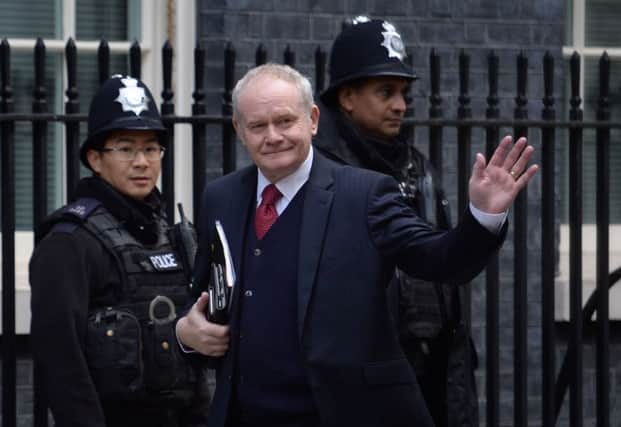YP Comment: Street fighter to statesman


A polarising man of war and peace, the divisive reaction to the death of Sinn Fein’s deputy leader spoke volumes. While Colin Parry, whose 12-year-old son Tim was blown up by an IRA device planted in Warrington in 1993, found the fortitude to “respect the man he became”, Norman Tebbit – whose wife Margaret was paralysed by the 1984 Brighton bomb – was unforgiving and hoped “he’ll be parked in a particularly hot and unpleasant corner of hell for the rest of eternity”.
It’s important, as the life of Mr McGuinness is assessed, to acknowledge that he had a chance to strive towards peace denied to many victims of the Troubles. A butcher’s son radicalised by the civil rights movement as Catholics sought equality, the one-time street fighter takes to his grave closely-guarded secrets about the terrorist acts that he perpetrated, or sanctioned clandestinely, when the future of Northern Ireland was being fought over.
Advertisement
Hide AdAdvertisement
Hide AdIt will always be a source of deep regret that so many lives were lost before the ruthless leader of one of the world’s most feared terrorist organisations reached out to John Major’s government when a small window of peace opened in the early 1990s. The then PM believes Mr McGuinness wrote the famous note, sent via intermediaries, which said “the armed conflict is ended but we need your help to bring it to a conclusion”.
A political process which led to the 1998 Good Friday Agreement – and then the unlikely sight of Mr McGuinness sharing power with avowed unionist Ian Paisley, so long a sworn enemy, at Stormont – it would be disingenuous not to acknowledge the compromises made by all after tolerance supplanted terrorism.
In this regard, it needed a strong Republican leader like Mr McGuinness to persuade diehard IRA activists to pursue their aim of a united Ireland via the ballot box and that was reflected by the recollections of Tony Blair, and many others, integral to this process.
This was best illustrated by the late Mr Paisley’s son, Ian junior, who said: “I think the Christian view in life is how a person’s journey started is of course important, but it is how it finishes which is actually more important.”
Advertisement
Hide AdAdvertisement
Hide AdWhile the path Mr McGuinness took earlier in his life can never be condoned, he made – as Theresa May rightly acknowledged – an essential and historic contribution to the extraordinary journey of Northern Ireland from conflict to peace.
The challenge now is maintaining this process when there is devolution deadlock at Stormont over a botched green energy scheme and uncertainty about future border arrangements between Northern Ireland and the Republic of Ireland because of Brexit, both of which maybe fuelling the unwelcome recent rise in sectarianism.
It’s a measure of the progress made in the province that the biggest challenges are now those pertaining to politics rather than security. It’s even more remarkable that both will be harder to reconcile without the presence, and influence, of Martin McGuinness – the terrorist overlord who became a statesman.